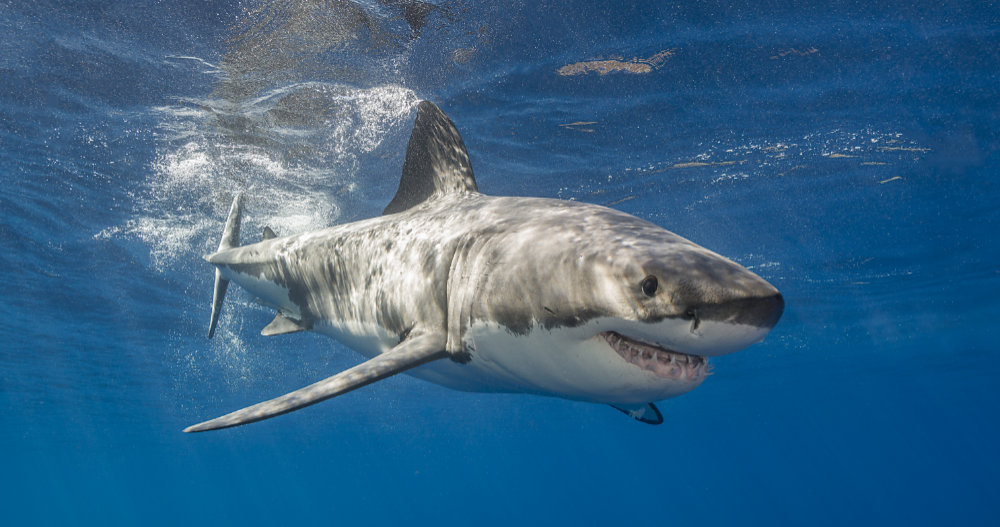
Say the word Shark to most people and it will conjure up an image of “Jaws” a Great White Shark or if they are slightly more knowledgeable possibly other dangerous or man-eating species such as Bull & Tiger Sharks. It may surprise you to know that there are around 440 recognised species, and some of them are on the verge of extinction.

Great White Shark – Better known as Jaws wildestanimal/Shutterstock
The demise of a few species of Shark might not seem significant to many; however, every species plays its own part in the complex food web, which is vital to the health of the Oceans. Removing any component upsets the delicate balance, and only time will tell how this affects the marine ecosystem overall is altered. Sharks also play a part in strengthening the gene pool of their prey species by taking the weaker or sick individuals. Currently, around 20 species are listed as endangered by The International Union for Conservation of Nature (IUCN) and these five are probably the ones most at risk.
The Ganges Shark
The Ganges shark (Glyphis gangeticus) as its name suggests is found only in the rivers of Eastern and North-Eastern India including the Hooghly River in West Bengal and the Ganges river area including the estuary and inshore water areas. Little is known about the species with most of what is known stemming from some old museum specimens. They are thought to grow to around 6ft in length and being members of the Requiem family, they are likely to be viviparous. They are often confused with the commoner though still vulnerable Bull Shark (Carcharhinus leucas) which is also sometimes called the Ganges shark, however, the true Ganges Shark is critically endangered due to local demand for its liver which is rich in oil, and it is highly possible that the species could disappear without ever being truly documented.
The Borneo Shark
The Borneo shark (Carcharhinus borneensis) is a small species (rarely thought to grow over 2ft in length) which frequents inshore and coastal areas and again like the Ganges Shark has not been widely studied. Its range seems restricted to the Mukah region off North-Western Borneo. It was thought extinct; however, it was rediscovered in 2007 and there have been sporadic reports of it ever since. Unfortunately, the area it is thought to survive in is now very heavily fished and although they are not directly sought, they suffer as by-product catch. Its future looks bleak unless concerted efforts are made to protect it.
The Smooth-Back Angel Shark
The Smooth-back Angel Shark (Squatina oculata) is a bottom-dwelling species found mainly off Brazil on the Western South Atlantic Oceanic shelf. Once plentiful, they are endangered due to the rise of bottom-trawl fishing in the area; something which has arisen due to the ever-growing demand for fish in the growing South American Markets. The problem is exacerbated by their slow maturation, which means most are now caught before they get a chance to reproduce. The problem is easily solved but the political will to control the deep trawling industry is currently lacking.
The Speartooth Shark
The Speartooth Shark (Glyphis glyphis) lives in and around the tidal reaches of large rivers in Northern Australia and New Guinea. Unfortunately, the increase in coastal development all over the Indo-Pacific region is rapidly destroying its coastal and river habitat and the few recent sightings of the species have been immature juveniles. The International Union for Conservation of Nature (IUCN) estimates the remaining population might be as few as 2,500 and is concerned that like many river species they are vulnerable to pollution and recreational angling. In New Guinea, they are also threatened by local Bow Fishermen who hunt them for food.
Whitefin Topeshark
The Whitefin Topeshark (Hemitriakis leucoperiptera) is another little-studied species which is only found around the Philippines. It is a smaller species reaching little over 3ft and given its perceived preference for shallower water is vulnerable to trawlers where it is often a bycatch. There have been very few reports of sightings and sadly they may already be close to extinction.





